Since Green-Wood’s founding in 1838, its grounds and its sculpture have inspired generation after generation of visitors and artists.
I recently learned of another artist inspired by Green-Wood. Howard Skrill teaches studio arts and lectures in art at St. Francis College in Brooklyn. For the last five years, he has been creating onsite drawings of publicly-displayed New York City statuary–including sculpture at Green-Wood.
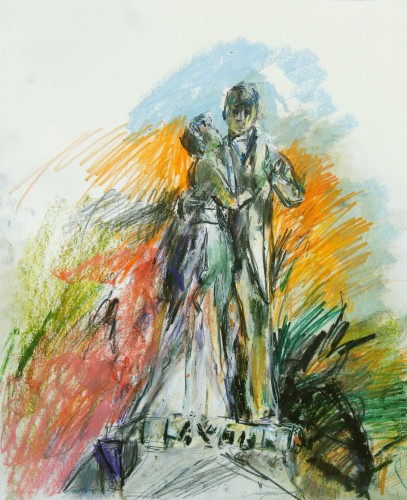
Howard writes about his recent work, which he calls his Anna Pierrepont Series:
The Anna Pierrepont Series, my drawings of public statuary in NYC, is plein air appropriation. Plein air drawings come into being through visual encounters with the constant changes of light and color in things ideally encountered out of doors. I roll a blue whole foods cart behind me, jammed with a folding chair, pencils, oil and chalk pastels, oil sticks and a pad of paper. I encounter a statue I wish to draw, unfold my chair, lay out my materials and struggle to represent the object emerging from the light and shadows of its surroundings onto a sheet of paper. The drawings are appropriation because the subjects I invariably select are public monuments created by other artists. In 2014, I began to augment the drawings with pictorial essays that enable me to explore beyond the plein air limitations of sight. The essays enable me to explore how the monuments came into being, their connection with their surroundings and their fate after installation. I have named the entire project after Anna Marie Pierrepont, a grand dame of 19th century Brooklyn interred in one of the most magnificent tombs in Greenwood Cemetery. I named the work in her honor as a comment on the gap between my silent and anonymous wanderings and her exulted self presentation.
Howard reports on his focus on Green-Wood: “. . . Green-Wood Cemetery is walking distance from my home and I have visited it more than any other place since I began the series.” He continues:
I have been visiting Green-Wood Cemetery for five years now in order to make images for my drawing series . . . . My visits to Green-Wood are typically tinged with palpable desire. I have often awoken on mild Spring mornings eagerly anticipating entering the cemetery through its towering brown Gothic filigreed gates on 5th avenue in Brooklyn. Inside, I often lose myself amidst its elegantly named, meandering roads and pathways. My eyes constantly surveying the landscape as I walk through, looking for figurative monuments that attract my attention. When I happen upon one of interest, I stop, unfold my chair and form dirty piles of my supplies, greasy oil pastels and oil sticks, colored and graphite pencils covered with oily scum and and chalk pastels in piles at my feet. I lay a pad of white paper upon my lap and begin using pigmented oil rubbed onto the paper, crisp pencil marks and the dusting of colored chalk to transform the appearance of the monument and its surroundings into an image. When the image is completed. I gather my materials together, leaving little or no trace of my presence remaining behind. I jam the stuff back into my bag along with the completed picture and wander out of Green-Wood into the streets beyond.
In 2014, I began to compose pictorial essays that traced connections between Green-Wood and the outside world. In early 2015, I wrote of the unhappy fate of Frederick William MacMoinnes’ “Civic Virtue Triumphant over Unrighteousness” that was rescued from oblivion by Green-Wood . . .
For all of 2015, I have been writing and drawing for a major pictorial essay “Civic Virtue” slated for publication along with other provocative essays, artworks and poetry in St. Francis College’s literary journal, Assisi: the Online Journal of Arts and Letters. . . .”
“Civic Virtue” primarily describes the amazing fate of “The Triumph of Civic Virtue over Unrighteousness,” a nearly one hundred year old sculpture by Frederick William MacMonnies that has, as a consequence of changing social mores, been subject to a version of “Hot Potatoes.” (Note: “Civic Virtue” has been discussed in previous Green-Wood blog posts, here and here.)
Here are three of Howard’s drawings of “Civic Virtue:”
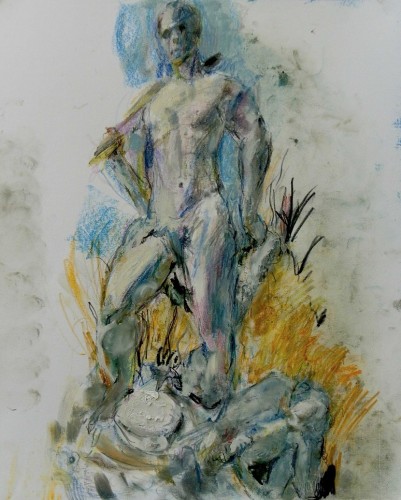
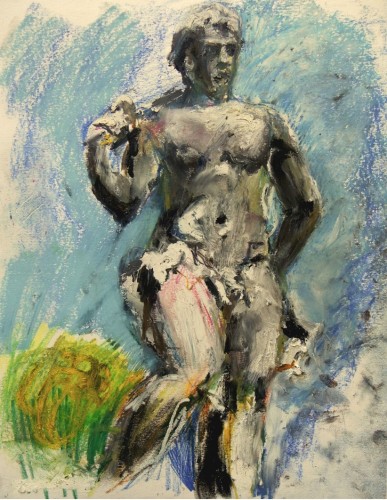
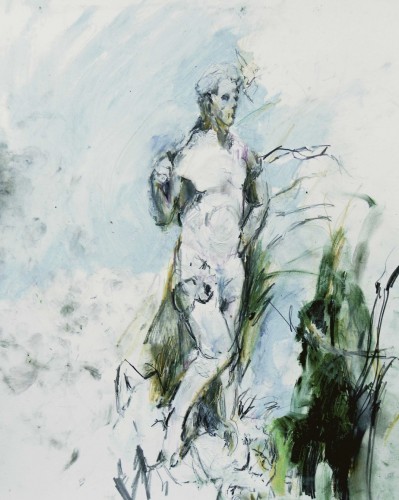
Howard shares his thoughts on statuary at Green-Wood:
I am fully aware of Green-Wood as a cemetery, constructed to be a home for the remains and memories of beloved departed. The statuary I draw, mostly reflect the deep emotions that inform the experience of loss. I pierced this veil very shortly after my own father was laid to rest in far off Suffolk County. I see how the figures I draw negotiate the experience of death, angels pointing upward towards the promise of eternal life or slumping over tombs, weak from loss’ agony. A child standing with a slingshot over his shoulder. A grand-father and his grand daughter frozen in the intimate embrace of a waltz.
And here are a few of Howard’s other drawings of Green-Wood sculpture:


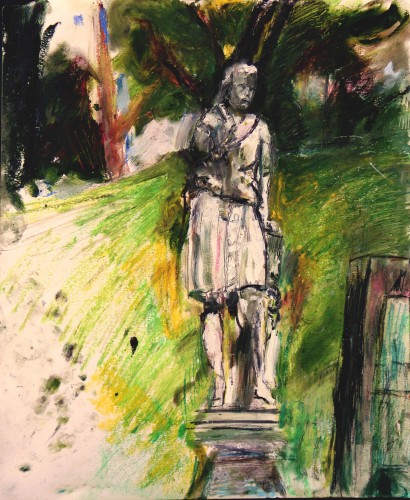
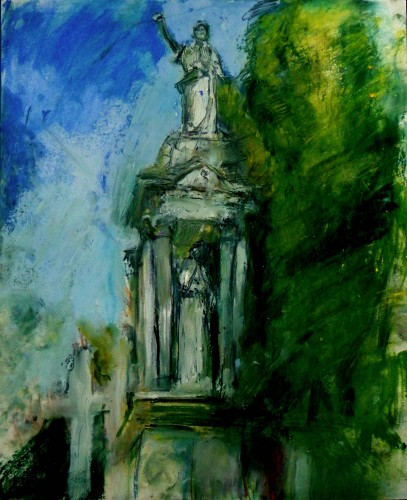
You will find Howard’s entire “Civic Virtue” essay here, starting on page 18. And, if you would like to read more about Howard’s art, you will find his blog here.
Green-Wood is a wonder-filled place of sculpture, trees, birds, and gardens. It is a green oasis in urban Brooklyn, a place for quiet contemplation and an inspiration to hundreds of thousands every year–including painters, sketchers, photographers, dancers, and other artists. Howard Skrill is one of those artists, inspired by Green-Wood.